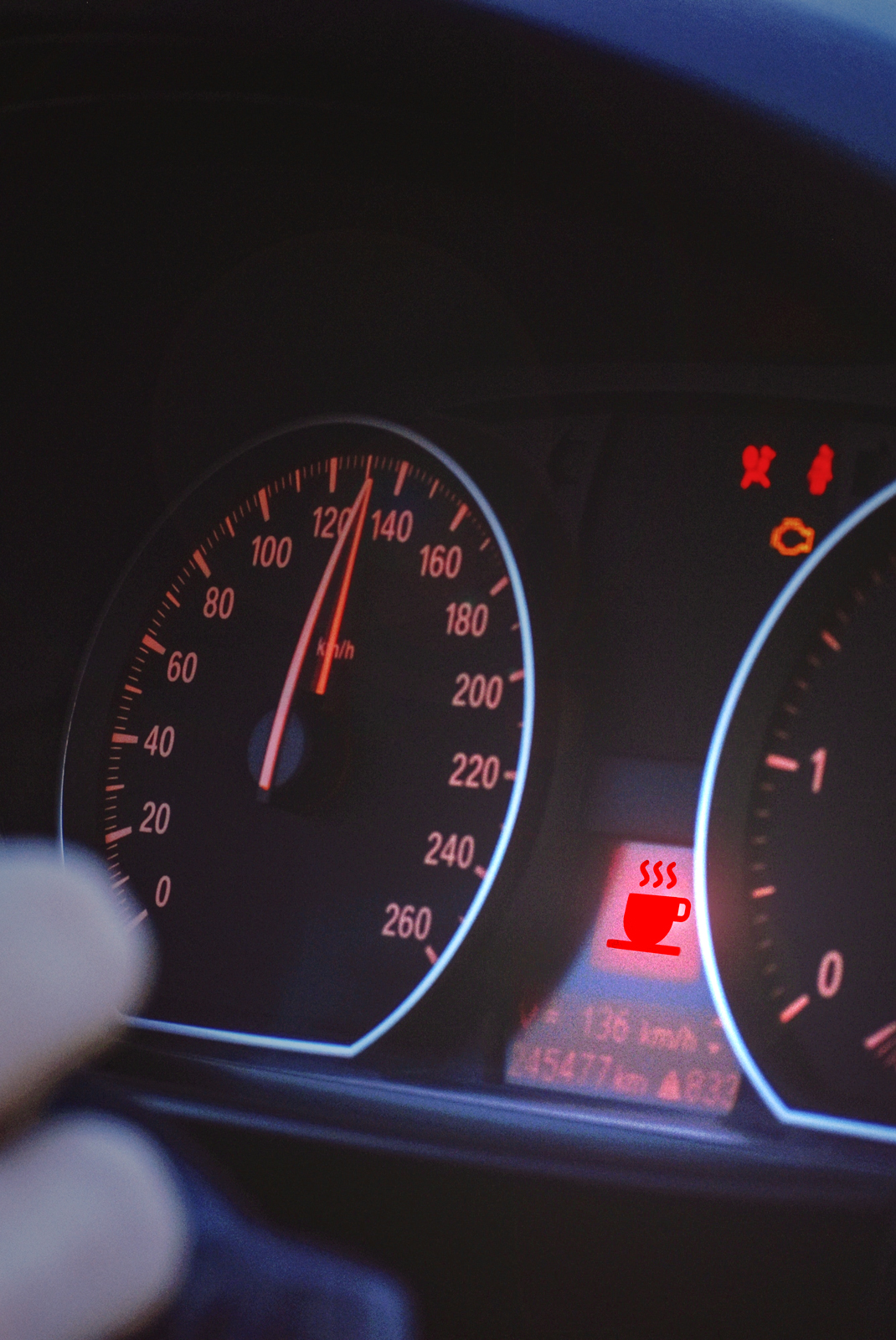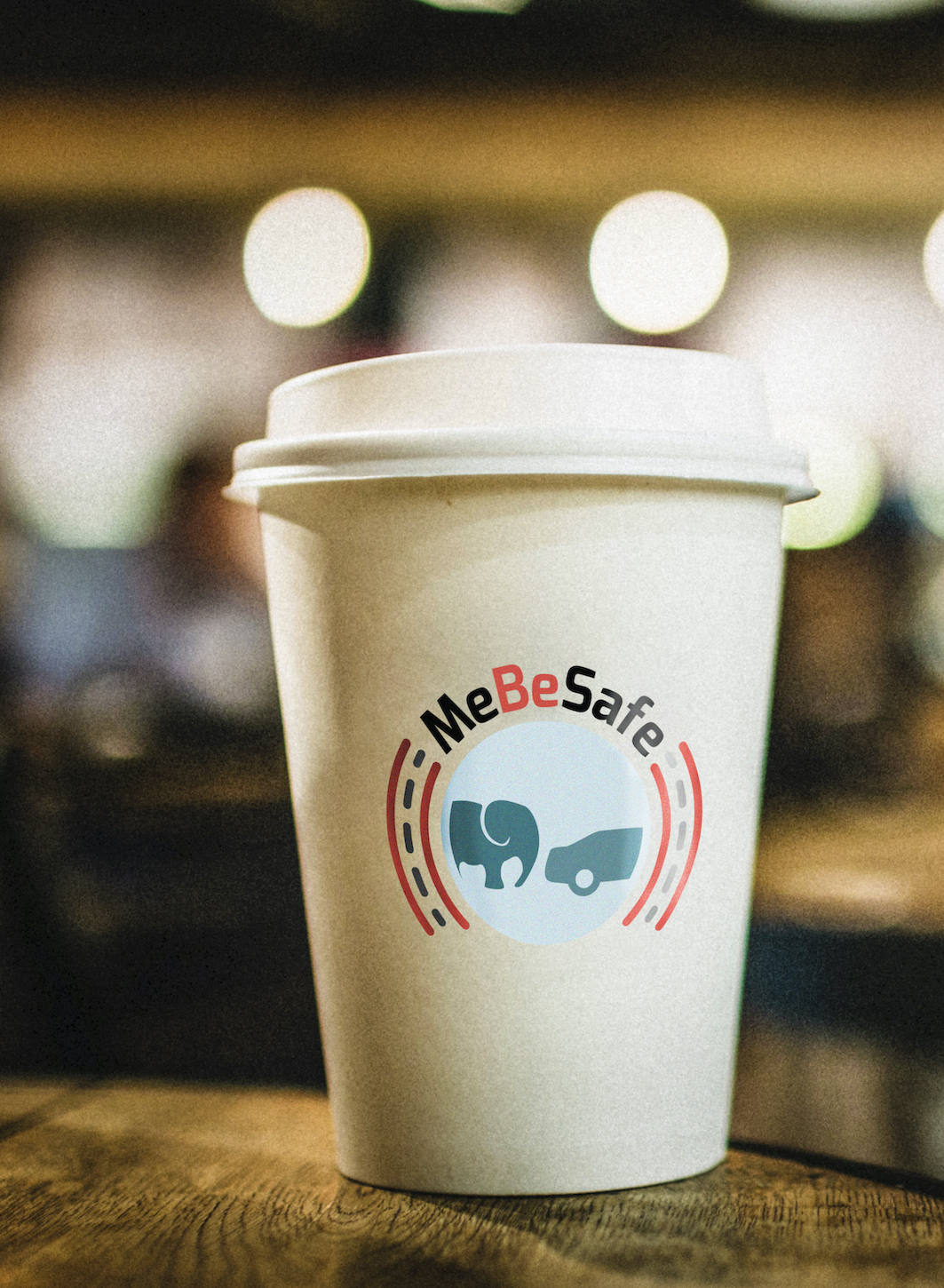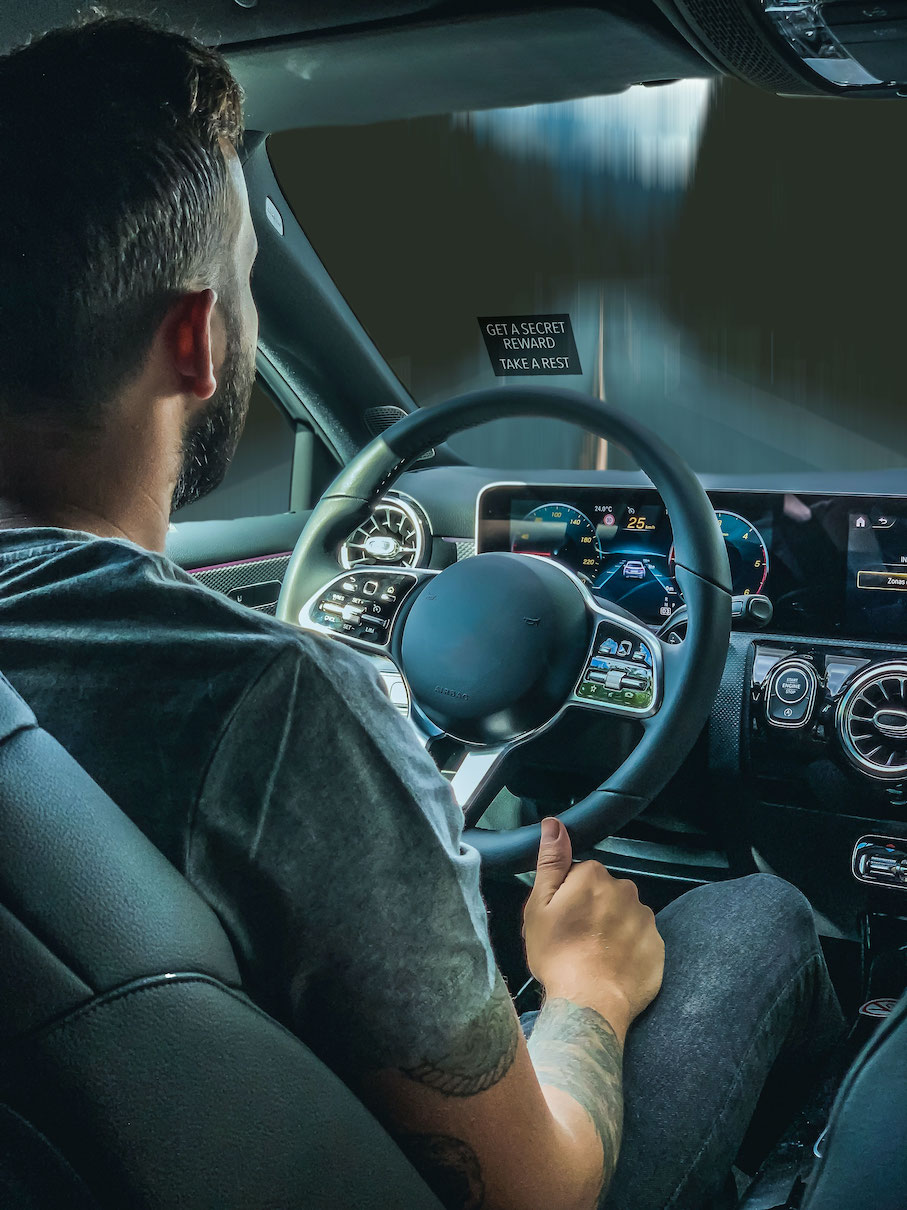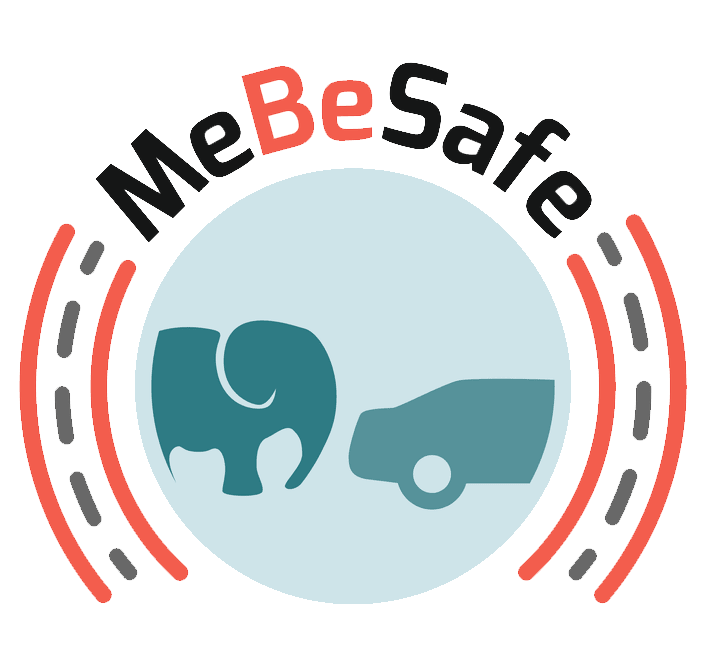A reward for tired drivers
to make them take a break
Drivers are known to keep on driving when getting tired, especially if they only have a little bit further to go. But taking a break could mean the difference between safe arrival and an accident. MeBeSafe investigated how to make taking that break more appealing.
The monotonous motorway seems to continue with no end. Few new impressions reach your mind, and your level of attention is likely to drop further and further. Many years ago, you would have been on your own in fighting the sleep. But in 2007, Volvo Cars introduced an advanced drowsiness detection system – Driver Alert Control – that since then has been able to detect when you are tired.
The system, which has been trained on data from sleep-deprived test drivers, is informally called the coffee cup, as it manifests like such an icon in the dashboard. It lights up in the dashboard anytime you are found to be drowsy, reminding you that you should stop and take a (coffee) break. With this world-first technology, you get something to help you assess the state you are in. The only problem is that it does not always lead to the desired action. Pär Gustavsson, a researcher from Volvo Cars, explains that people in essence just want to arrive now.

“The drowsiness detection itself is really good, but many people have planned their route way in advance. If the coffee cup lights up when they only have ten more minutes to go, they will likely think they can manage the last bit too and just go on”
This is a natural bias where you believe that if the journey has gone well so far, it will keep doing so for the last, brief, part. Sadly, this is not an absolute fact. Accidents are more likely to happen when you are really tired, no matter how good you were driving when you felt more awake. And a lot of people just keep pushing on, because it’s really hard to make a new plan when you are really tired.
While similar drowsiness detection technologies have become commonplace among car manufacturers, a new step might be necessary to actually make people stop and take a break in the middle of their trip. MeBeSafe has set out to combine the technology with a new approach; rewarding the people who actually stop to take that break.
“Instead of just showing the coffee cup symbol, we thought – what if we could actually give them real coffee instead?” Pär describes.
Offering coffee to people who stop when drowsy was the initial idea that started it all – to turn that little icon on the dashboard into something tangible that you can really drink. The idea lived on, but had to be developed further in order to really work.
“There were a few practical challenges with this idea. Not everyone loves coffee and there might not be any suitable place nearby where they could get it – and they might not think it is worth it.” Pär states. “That’s why we decided to raise the stakes”

A workshop was held on what kind of rewards would motivate drivers to take a break, and this resulted in the idea of a surprise gift with secret content. In practice, when drivers are found to be tired, they will be informed that they will receive a gift if they stop their car within the next few minutes. However, they won’t know what gift it will be until they actually stop. This way, it appeals both, to people’s appreciation for gifts and for surprises. And it is a surprise that keeps on giving.
“We have opted for gift cards from a lot of different stores.” Pär explains. “It’s completely random what you will get, except that you will not get the same card twice, so the surprise element is always there”

Now, whenever something is free, there is always a possibility that it will be overused or abused. There is the theoretical risk that drivers might hit the road when they are tired in order to get a gift, or just stopping for a short time when they’ve been awarded the gift – only to drive tired again and get another gift. There are naturally checks in place to counter any such tendencies, for example that only one gift per a set period of time can be obtained. All in all, Pär is hopeful that the system will not only work but also stimulate safer behaviour even when the system is not used.
“We hope that the measure will actually change behaviour. If you receive a gift when you stop to rest, you might associate stopping to rest with something positive. And then you might learn to do so, even if you’re not driving a Volvo or not being offered a reward for stopping” Pär proclaims.
The new implementation seems to make twice as many drivers stop and rest within 20 mins, with gift values ranging from small amounts up to 90€, to see what works best. Not surprisingly, the giveaway-aspect of the measure is a future puzzle-challenge. Given that it works, who will pay for the rewards in the long-run and how valuable must the offer be to have lasting effects? Pär is cautiously positive that the pieces of the puzzle will fit together in the end.
“We will continue our research to see if we can find a reward level and an implementation model which is able to break through that “wall of drowsiness” you may experience when driving really tired, without the reward costs breaking the bank.” Pär says. “Since true drowsiness events actually are quite rare, it could be that reward levels can remain quite high without this becoming an expensive countermeasure against drowsy driving. Time will tell.”
